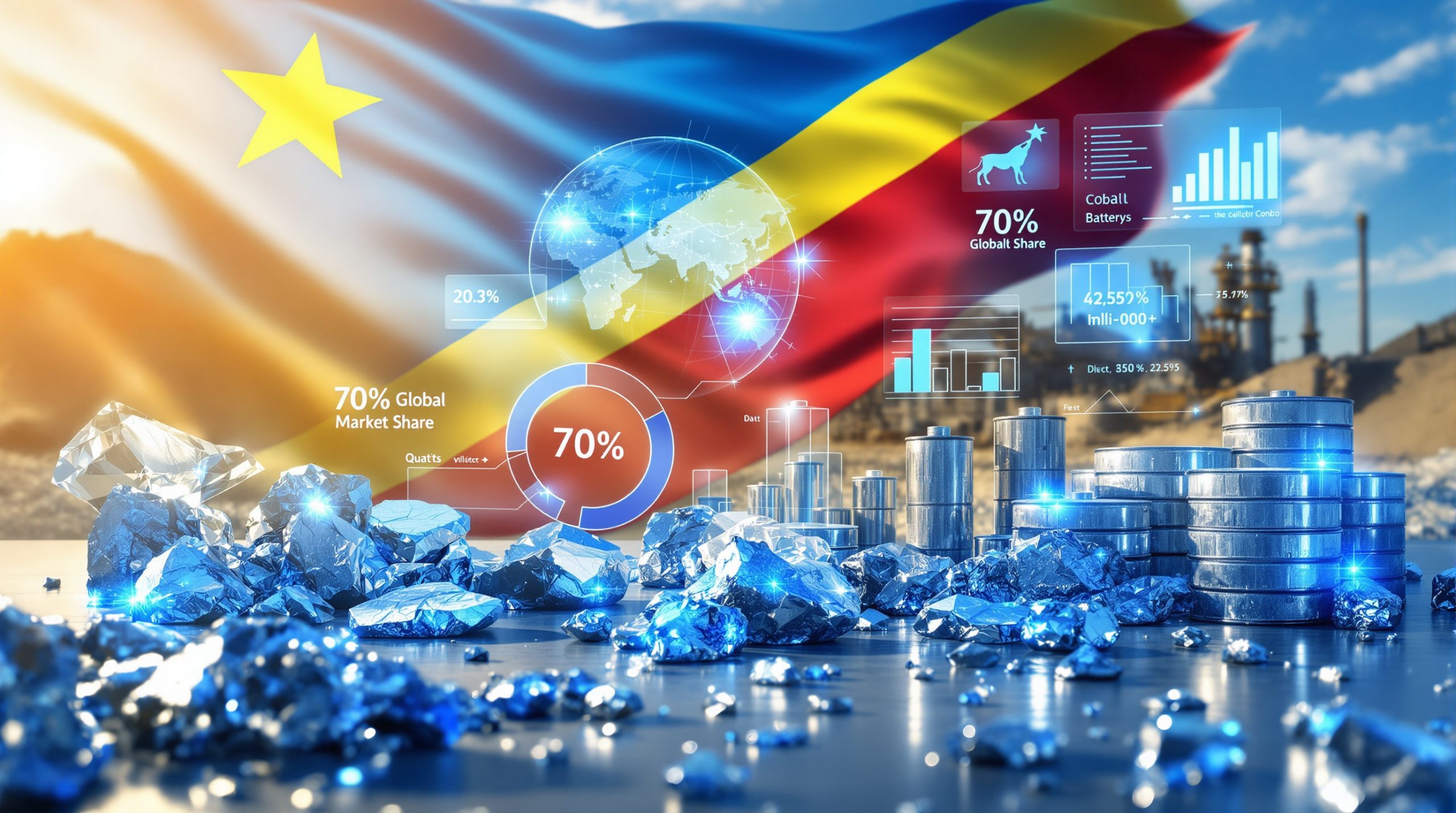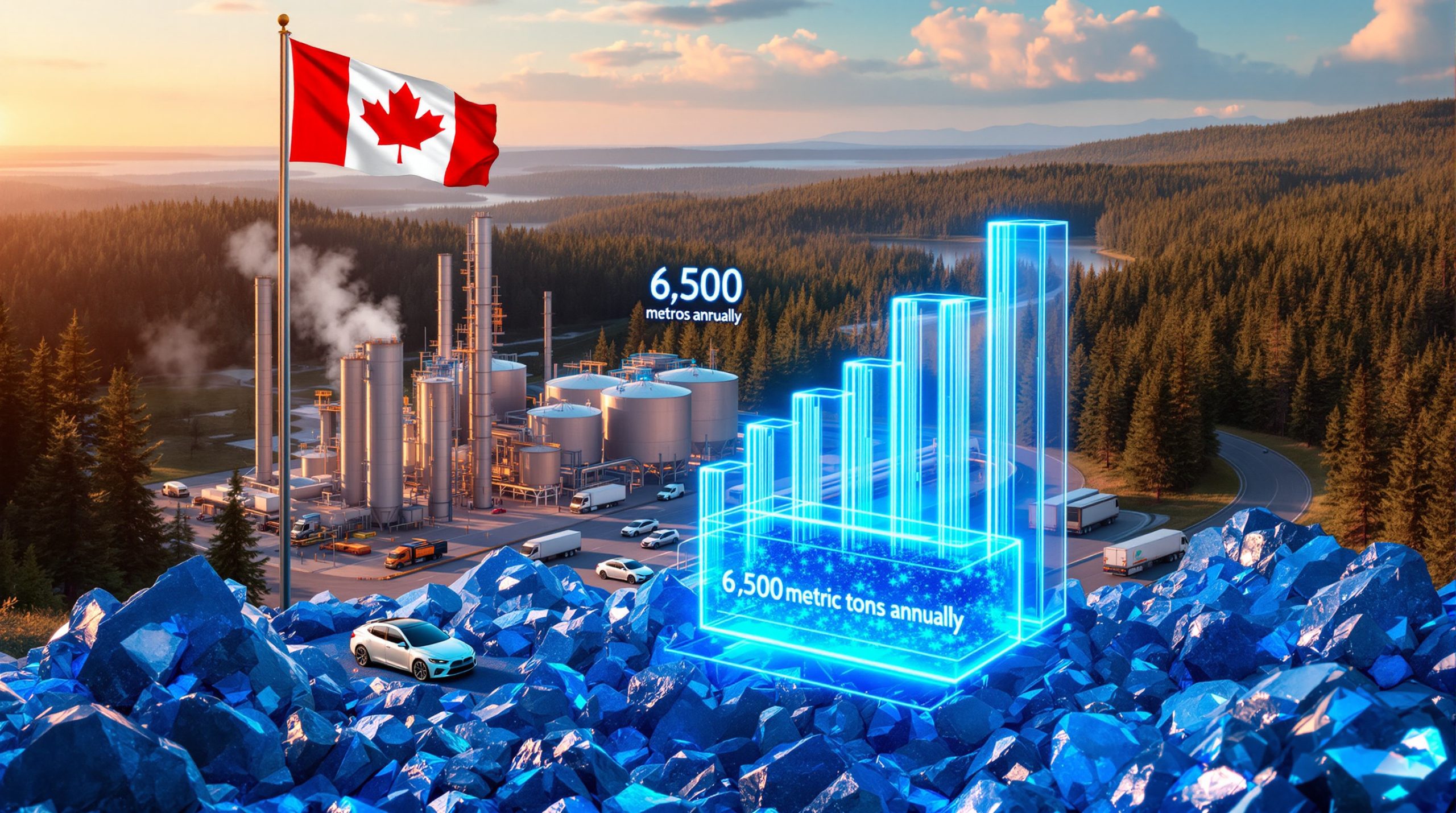Understanding the Growing Copper Supply-Demand Gap
The global copper market is experiencing a critical supply-demand imbalance that threatens to intensify in 2025 and beyond. As copper plays an increasingly vital role in renewable energy infrastructure, electric vehicles, and digital technologies, demand continues to accelerate while supply faces significant constraints. This widening gap has driven copper prices to near-record levels, placing additional pressure on industries reliant on this essential metal.
Recent market movements reflect growing anxiety, with copper recording its largest weekly gain in three months during September 2025, climbing 1.9% to settle at $10,181.50 per ton on the London Metal Exchange. Industry analysts interpret these price movements as clear indicators of market tightness that may persist through 2026.
Current Copper Market Dynamics
Industry experts are closely monitoring copper's price trajectory as it responds to supply disruptions and growing demand. The metal has demonstrated remarkable resilience despite broader economic uncertainties, highlighting its fundamental importance to both traditional and emerging industries.
According to BMI analyst Olga Savina, "The copper market has been, and continues to be, jolted by supply-side issues this year," adding that prolonged supply setbacks will likely strengthen the bullish narrative for copper throughout the remainder of 2025 and potentially into 2026.
Market participants note that copper's price stability amid broader market volatility signals underlying strength in the metal's fundamentals. The copper price prediction appears increasingly structural rather than cyclical, with implications for industries worldwide.
What's Causing the Copper Supply Shortage?
Several interconnected factors are contributing to the tightening copper market, ranging from immediate production disruptions to longer-term structural limitations affecting the mining industry's ability to expand capacity.
Major Production Disruptions
The copper market has experienced multiple high-profile disruptions in 2025, highlighting the vulnerability of global supply chains to unexpected events. These disruptions have collectively removed significant tonnage from the market at a time when inventories were already low.
Recent Mine Accidents and Force Majeure Events
September 2025 has been particularly challenging for copper supply, with two major disruptions occurring in quick succession. Freeport-McMoRan declared force majeure at its massive Grasberg mine in Indonesia following a deadly accident involving a large mudflow. This incident claimed the lives of two workers, with five others remaining missing, prompting authorities to halt operations while rescue efforts continue.
Nearly simultaneously, Hudbay Minerals was forced to shut down a key mill operation in Peru, further constraining global copper supply forecast. These incidents demonstrate the mining industry's ongoing safety challenges and operational vulnerabilities, particularly in regions with complex geological conditions.
Market analysts note that these disruptions are particularly impactful because they've occurred at a time when buffer stocks are minimal and alternative supply sources limited. As one market observer explained, "The incidents in South America are the latest in a series of disruptions to ore supply and show how vulnerable the market is to shocks."
Operational Challenges at Major Producers
Beyond acute disruptions, copper producers face ongoing operational challenges that limit production expansion:
- Aging infrastructure at established mines requires more frequent maintenance
- Water scarcity in key mining regions restricts processing capabilities
- Labor disputes and community conflicts interrupt production schedules
- Rising production costs diminish the economic viability of lower-grade deposits
Structural Supply Limitations
The copper industry faces fundamental constraints that limit its ability to rapidly increase production in response to higher prices and growing demand.
Underinvestment in New Mining Capacity
The copper sector has experienced a prolonged period of underinvestment in new mining projects, creating a pipeline gap that cannot be quickly addressed. Several factors have contributed to this situation:
- Project development timelines typically span 7-10 years from discovery to production
- Capital intensity of new copper projects has increased substantially
- Environmental permitting processes have grown more complex and time-consuming
- Investor caution following previous commodity downturns has limited funding availability
This investment gap means that even with current higher prices, significant new supply is unlikely to reach the market before the late 2020s, creating a prolonged period of potential shortage.
Geographic Concentration of Production
Global copper production remains heavily concentrated in a relatively small number of countries and regions, creating supply vulnerability. Chile and Peru together account for a substantial portion of world copper production, while Indonesia, Australia, and the Democratic Republic of Congo represent other significant sources.
This concentration exposes the global market to regional risks including:
- Political instability and regulatory changes in producing countries
- Environmental challenges specific to mining regions
- Infrastructure limitations in developing economies
- Geopolitical tensions affecting international trade
How Is Demand Driving the Copper Shortage?
While supply constraints create one side of the market imbalance, accelerating demand represents an equally important factor in the copper supply shortage equation.
Electrification and Energy Transition
The global push toward decarbonization has created unprecedented demand for copper across multiple sectors, with electrification serving as the common thread driving consumption growth.
Electric Vehicle Production Surge
The transportation sector's transformation has emerged as a major driver of copper demand growth. Electric vehicles require significantly more copper than internal combustion engine vehicles, primarily for:
- Battery systems and power electronics
- Electric motors and associated components
- Charging infrastructure and connectivity
- Wiring harnesses and electrical systems
Each electric vehicle requires approximately 2-3 times more copper than conventional vehicles, creating substantial incremental demand as global EV adoption accelerates. This multiplier effect means even modest EV market penetration creates significant copper demand growth.
Renewable Energy Expansion
The renewable energy sector represents another major growth vector for copper demand:
- Wind power generation systems use copper in generators, transformers, and collection systems
- Solar photovoltaic installations require copper for wiring, inverters, and grounding systems
- Energy storage systems utilize copper in batteries, connectors, and control systems
- Grid modernization demands substantial copper for transmission and distribution upgrades
These applications often require high-purity copper with excellent conductivity properties, further straining available supply of premium-grade material.
Technology and Infrastructure Development
Beyond the energy transition, technological advancement and infrastructure modernization are creating additional copper demand.
Data Center and AI Infrastructure Growth
The digital economy's expansion has created a new source of copper demand that shows no signs of slowing:
- Modern data centers require extensive copper for power distribution systems
- Cooling infrastructure utilizes copper in heat exchangers and thermal management
- Server farms and computing clusters use copper in components and connectivity
- Backup power systems depend on copper for reliability and performance
As artificial intelligence applications grow more widespread, the associated computational infrastructure demands even more intensive power delivery systems, further increasing copper requirements.
Industrial Automation and Smart Manufacturing
Advanced manufacturing technologies represent another growth vector for copper consumption:
- Automated production systems utilize copper in motors, actuators, and control systems
- Robotics applications require copper for precision movement and reliability
- Industrial IoT networks depend on copper for power and data transmission
- Smart factory systems integrate copper throughout monitoring and control functions
These applications typically demand high-performance copper with specific metallurgical properties, creating competition for premium material.
What Are the Market Implications of the Copper Shortage?
The emerging copper supply-demand imbalance creates significant implications for markets, industries, and economies worldwide.
Price Forecasts and Volatility
Copper's price trajectory reflects the market's evolving assessment of supply adequacy relative to demand growth.
Expert Price Projections
Market analysts have been revising copper price forecasts upward as supply constraints become more apparent. Current prices near $10,200 per ton reflect tight market conditions, with many analysts suggesting further upside potential as supply disruptions continue and demand growth accelerates.
The price outlook remains influenced by:
- Duration of current production disruptions at major operations
- Development timelines for new projects entering the pipeline
- Pace of demand growth from electrification and renewable energy
- Macroeconomic conditions affecting industrial activity globally
Price Volatility Factors
Several factors contribute to increased copper price volatility:
- Limited buffer stocks to absorb supply disruptions
- Financial market participation amplifying price movements
- Regional demand patterns creating localized supply pressures
- Processing bottlenecks creating disconnects between mine and refined metal markets
This volatility creates challenges for both producers and consumers attempting to manage price risk through hedging and contractual arrangements.
Industry Response to Supply Constraints
Market participants across the copper value chain are implementing various strategies to address supply challenges.
Mining Company Strategies
Major copper producers are responding to the tight market through:
- Accelerating brownfield expansion projects at existing operations
- Increasing exploration budgets to identify new resources
- Pursuing technological innovations to improve recovery rates
- Evaluating previously uneconomic deposits that become viable at higher prices
Chinese copper processors are particularly active in expanding smelting capacity, though industry participants have raised concerns about overcapacity and unsustainably low processing fees. According to recent reports, China's top copper smelters are now urging authorities to tighten control over new capacity, warning that cut-throat competition has driven processing fees to historical lows, threatening the industry's health.
Downstream Consumer Adaptations
Industries dependent on copper are implementing various approaches to manage supply risk:
- Securing long-term supply agreements with producers
- Increasing inventory levels to buffer against disruptions
- Exploring material substitution where technically feasible
- Enhancing recycling and circular economy initiatives
These adaptations vary by industry, with critical applications maintaining copper usage while less essential uses may see substitution.
How Might the Copper Supply Shortage Be Resolved?
Resolving the copper supply shortage will require multi-faceted approaches addressing both supply expansion and demand management.
Potential Supply Growth Catalysts
Several pathways exist to potentially increase copper supply in the medium to long term.
New Project Development Timeline
The global project pipeline includes several significant copper developments that could help address the supply gap:
- Argentina recently approved McEwen Mining's $2.7 billion Los Azules copper project for a tax break program, with the project expected to contribute $1.1 billion in exports annually
- Southern Copper's Tía María project in Peru is advancing toward production in 2027, with projections that it will boost Arequipa's revenues by 40% from royalties alone
- Multiple projects in Chile, Australia, and the Democratic Republic of Congo are progressing through development stages
However, it's important to note that even the most advanced projects typically require several years to reach commercial production, meaning near-term relief is limited.
Technological Innovations in Mining and Processing
The mining industry is pursuing various technological innovations that could help address supply constraints:
- Advanced extraction techniques enabling economic recovery from lower-grade ores
- Process optimization reducing energy and water consumption in mining operations
- Enhanced recovery methods increasing copper yield from existing operations
- Remote and autonomous operations improving safety and efficiency
These innovations may help extend the productive life of existing mines while making previously uneconomic resources viable.
Demand-Side Adjustments
Copper demand may also adjust in response to sustained high prices and limited availability.
Material Substitution Possibilities
Some applications may reduce copper dependency through:
- Aluminum substitution in certain electrical applications where weight and space constraints permit
- Composite materials replacing copper in non-critical components
- Engineered alloys requiring less copper content while maintaining performance
- Alternative technologies eliminating copper requirements in specific applications
The potential for substitution varies significantly by application, with critical uses having limited flexibility while discretionary applications show more elasticity.
Recycling and Circular Economy Initiatives
Enhanced copper recycling represents a significant opportunity to supplement primary supply:
- Improved collection systems capturing more end-of-life copper products
- Advanced separation technologies increasing recovery rates
- Design-for-recycling approaches facilitating material recovery
- Regulatory frameworks supporting circular economy principles
While recycling alone cannot resolve the supply shortage, it represents an important component of the overall solution.
What Should Investors Watch for in the Copper Market?
Investors monitoring the copper market should focus on several key indicators that provide insights into supply-demand dynamics and price direction.
Key Market Indicators
Specific metrics offer valuable signals about copper market conditions.
Supply Disruption Metrics
Important indicators of supply health include:
- Production reports from major mining companies
- Treatment and refining charges (TC/RCs) – low levels indicate tight concentrate supply
- Exchange inventory levels – declining stocks signal market tightness
- Physical premiums over exchange prices – high premiums indicate regional scarcity
Changes in these metrics often precede broader price movements, making them valuable leading indicators.
Demand Trend Signals
Critical demand indicators include:
- Manufacturing PMI data from major economies – indicates industrial activity levels
- Construction sector trends in key markets – reflects infrastructure development
- Electric vehicle production and sales data – signals transportation sector copper demand
- Renewable energy installation rates – indicates energy transition copper requirements
These metrics provide insights into the pace and direction of copper consumption growth.
Geopolitical and Regulatory Factors
Beyond market fundamentals, broader policy developments significantly impact copper markets.
Trade Policy Developments
International trade policies increasingly influence copper flows:
- Export restrictions from producing nations seeking to develop domestic processing
- Import tariffs affecting regional price differentials and trade patterns
- Regional trade agreements impacting mineral development frameworks
- Strategic stockpiling initiatives creating additional demand
These policies can rapidly alter market dynamics and create regional price disconnects.
Environmental Regulations and Mining Policies
Regulatory developments affecting future supply include:
- Permitting timelines for new projects in key jurisdictions
- Environmental standards impacting operational practices
- Indigenous rights frameworks affecting resource development
- Climate policies influencing energy costs and operational parameters
These factors can significantly impact project economics and development timelines.
FAQ: Copper Supply Shortage
How long is the copper supply shortage expected to last?
The copper supply shortage appears structural rather than cyclical, with most industry analysts projecting tight market conditions to persist for at least 3-5 years. The combination of limited new project development, declining ore grades at existing mines, and accelerating demand from electrification creates conditions for extended market tightness. While higher prices may eventually stimulate sufficient supply response, the long lead times for new mine development mean that significant supply growth is unlikely before the late 2020s.
Could recycling solve the copper supply shortage?
While recycling makes an important contribution to copper supply, it cannot fully resolve the projected shortage. Recycling typically provides approximately 25-30% of copper consumption, with the remainder coming from primary mine production. Even with improved collection systems and recovery rates, recycled material cannot keep pace with the accelerating demand growth from electrification, renewable energy, and digital infrastructure. However, enhancing recycling represents an important component of the overall solution, particularly for regions with limited domestic mining capacity.
Which countries are best positioned to increase copper production?
Several countries have significant potential to increase copper production, though each faces distinct challenges. Chile and Peru maintain substantial geological resources but confront water scarcity, community relations challenges, and changing regulatory environments. The Democratic Republic of Congo offers substantial high-grade resources but faces infrastructure limitations and political uncertainty. Indonesia has significant resources but increasingly complex operating conditions. The US copper production outlook is also drawing attention as domestic resources become increasingly strategic. These diverse challenges mean production growth will likely come from multiple regions rather than a single dominant source.
How does the copper shortage affect green energy transitions?
The copper supply shortage represents a significant challenge for green energy transitions worldwide. Renewable energy systems typically require 5-10 times more copper per megawatt than conventional power generation, while electric vehicles need 2-3 times more copper than internal combustion vehicles. Insufficient copper supply could potentially slow deployment rates or increase costs for these technologies, potentially delaying climate goals. This situation highlights the interdependence between mineral resources and clean energy development, emphasizing the importance of responsible resource development alongside renewable technology deployment.
What role does China play in the global copper market?
China maintains a central position in global copper markets, representing both the world's largest consumer and an increasingly important processor of the metal. Chinese companies have rapidly expanded copper smelting capacity, creating intense competition that has driven processing fees to historical lows. This expansion reflects China's strategic focus on securing critical materials for its manufacturing sector and energy transition. Chinese copper demand remains heavily influenced by construction activity, manufacturing output, and more recently, electric vehicle production and renewable energy deployment. These dynamics make Chinese economic policies and industrial strategies critical factors in global copper market developments.
Further Exploration
The copper supply shortage represents one of the most significant challenges facing the global transition to sustainable energy and transportation systems. Understanding the complex interplay between geological constraints, technological developments, and market dynamics provides valuable context for both industry participants and investors navigating this critical market.
Market participants seeking additional insights should monitor production developments at major mines, policy initiatives affecting resource development, and technological innovations throughout the copper value chain. With copper's central role in electrification and renewable energy, the metal's supply-demand balance will remain a critical indicator of progress toward global sustainability goals.
Investors looking to capitalize on these market trends should carefully evaluate copper investment strategies and closely monitor potential supply disruptions such as the Glencore smelter disruption that could further tighten market conditions. Furthermore, according to The Guardian's analysis, the supply-demand gap could reach critical levels by 2030 without significant investment in new production capacity.
Want to Profit from the Next Major Mineral Discovery?
Don't miss out on the next copper stock opportunity – Discovery Alert's proprietary Discovery IQ model delivers real-time notifications on significant ASX mineral discoveries, helping you stay ahead of the market. Explore how major discoveries can generate substantial returns by visiting the dedicated discoveries page and begin your 30-day free trial today.




